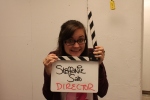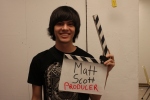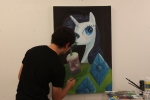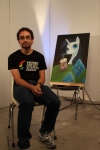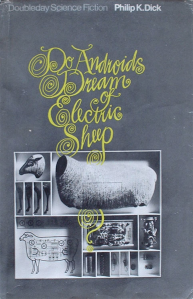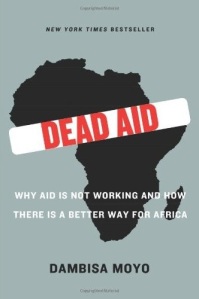UNPUBLISHED
Credits
Director: Steffanie Salo
Producer: Matt Scott
Director of Photography: Brad Bangsboll
Sound: Michael Seguin
Key Grip: Spencer Johnston
Editor: Matt Scott
The brony fandom has now been seen as a prime example of a show with a prominent secondary fanbase. But to the uninitiated, bronies seem to be nothing more than adult men who have taken a liking to what is meant to be a show aimed at young girls. The question on the lips of many are why exactly do bronies love My Little Pony so much? Bros Who Like Ponies seeks to answer that.
I met with the crew on their last day of production, as they were shooting Fanshawe art student Charles Colling painting a pony.
Key Terms
Cosplay: A portmanteau of ‘Costume Roleplaying’, in other words, fans of a certain medium dressing up as their favorite characters.
4chan: The most famous and controversial of the various online bulletin imageboards, with various sections dedicated to discussing various topics. By popular demand, a /mlp/ (My Little Pony) board was created in 2011.
Steffanie Salo
So, what is your documentary about, exactly?
My documentary is about the fans of My Little Pony: Friendship Is Magic. Its’ message encourages being yourself. The documentary aims to promote acceptance of one of the show’s fanbase, young men, since the show’s target audience is young girls.
How long do you plan on shooting it?
A 12-15 minute documentary with 3 days of actual shooting, with today (October 23rd) being the last, shot on a budget of nothing
Who are the various subjects of your documentary, and what do you specifically plan on shooting?
The subjects are ‘bronies’, bros who like ponies. The subjects vary with the amount of pride in their fandom. We’re interviewing hardcore bronies and closet bronies. Hardcore bronies openly celebrate their fandom and we’re asking them about their love for the show. Closet bronies are fans too, but choose to keep their fandom more under covers, and we’re aiming to find out why. We’re also exploring gender identities and stereotypes, with the help of a young boy.
Where and how did the brony thing start, and what was the appeal?
I have given a small explanation in the documentary itself. The show was redone by Lauren Faust in 2010. She created these very relatable, multi-dimensional characters. It became more of a family show that is really meant for anybody, that had matured humor and characterization. Online communities like 4chan played a big part in the development of the fandom. By the time the second season premiered, the show was catering to its secondary demographic.
How many bronies exist as of now, and on campus? How easy or difficult was it to track down bronies for interviews?
Total number? Reaching the thousands. As for on campus, I have no idea. It’s difficult to say, because not everyone who is a brony is always proud of admitting that. As for the ones I did find, they were mostly friends of my own. Chris Kovaliv was the first brony I ever met, and as for the others, they were mostly ‘converted’ laughs by him
What are some interesting things you can tell us about the bronies you’ve interviewed?
One of the bronies we interviewed is a cosplayer is and is actually working on an MLP costume. Another brony wrote an essay comparing MLP to the Republic of Plato. And of course we have Charles Colling painting Rarity (a character from the show).
On today’s shoot: you’re filming Charles Colling creating a MLP painting. What’s the deal with that?
The original concept was a graffiti artist painting a mural, but unfortunately we had issues with an artist and a place for the graffiti. We contacted the FSU art department and they referred us to Charles, who, as luck would have it, is also a brony.
Challenges?
My biggest challenge and goal for this film is to make it appealing to bronies and non-bronies alike, to be able to convey my message of self-esteem and pride to everyone.
Matt Scott
So you’re the producer and editor…what tasks and challenges have you got with shooting this documentary?
There haven’t been too many issues with the doc itself, all the interviews were set up by the director with her connections. My biggest contribution was setting up the artist for the documentary. I also made sure things like release forms get filled and I oversee the timing of the production so we don’t go overtime. I’ve also created stuff like call sheets and of course, slate each take for the camera. So yeah, really, I make sure everything gets done.
So do you watch MLP?
I don’t watch the show, really. I’ve seen tidbits on production. I don’t really consider myself a fan but I’ve learned to appreciate the show based on who we’ve talked to and their opinions. While it’s aimed at little girls, it’s sophisticated and I can see the appeal for adults. The animations style is nice and in my opinion, people who bash the show haven’t really seen it themselves, and need to be more open-minded on what they’re putting down, cause they don’t know what they’re missing.
What’s the filmmaking process like?
There’s three phases: There’s pre-production, production and post-production. Pre-production’s all about the development of the idea, planning days and making sure the equipment’s booked. When it comes to production, its about getting interview, capturing b-roll, really about the shooting process. So really, going to locations, getting forms done, that sort of stuff. It really takes time to finish this phase because you can never get enough b-roll. Once we feel like we’ve finished and are ready for editing, we move on to postproduction. We use Avid, since the Final Cut X update. It’s the first time it’s been used in Fanshawe, so adapting to it has been kinda difficult, but at the same time it’s a good learning experience since Avid is industry-standard. We have multiple rough cuts and a fine cut. After the fine cut has been finished and presented, with a few tweaks, we have a picture lock, where we don’t touch the cut. After smoothing over everything with audio post and video post, it’s exported, and handed in. We also plan to submit it to the Fanshawe AFM (advanced film making) festival, probably in spring. There will be more information on it soon.

